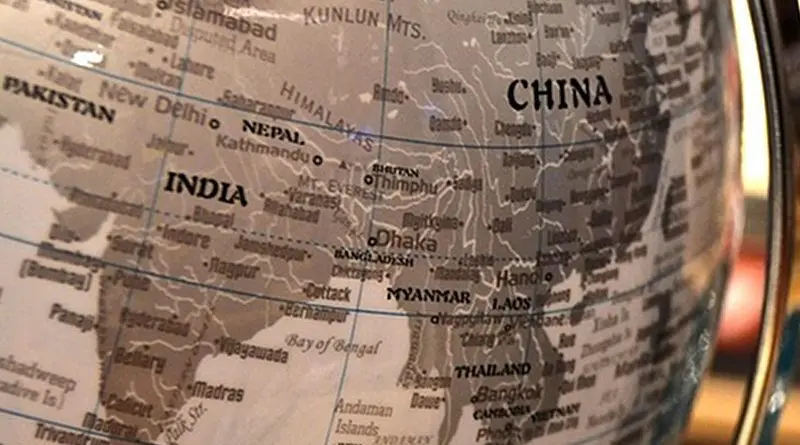Quad: A Force Of Peace Or Destabilizer For South Asia? – OpEd
The world is witnessing the geopolitical transition from unilateralism to multilateralism with bloc politics at its center. The Russia and Ukraine crisis has transformed the strategic stability of Asia by not only questioning major partnerships in the region but by instigating the political divide. In contemporary times, Quad is one such partnership that has put a barricade on regional cohesion. In a recent meeting of the Quad on March 3, 2022, the narrative of “like-minded democracies” highlighted the solidification of the Quad as a strategic and political coalition and its narrative to counter the regional powers. Certainly, the Quad partnership is based on the Asia Pacific’s most protruding democracies working under a subsequent geopolitical and geostrategic agenda in the Indian Ocean. The idea of Quad is linked with China’s rise in a broader domain and regional dominance in the narrow domain where India and Pakistan’s role comes in.
One cannot deny that being a member of the Quad, India has the substantial potential to influence regional security and stability. On the other hand, Pakistan’s interest in the Indian Ocean due to its strategic location cannot be ignored. Pakistan has a role to play in the geopolitical shift of this region. Therefore, it is important to see the Quad’s role as a force for retaining peace in the region or working as a destabilizer for South Asia. Recently, a Biden top administrative official has said that India is a key player in the Quad and important for the US’s Indo-Pacific presence. The backdrop for this statement is to counter China’s rise and strategic presence in the Indo-Pacific region, specifically, China’s economic projects. It is important as it portrays the changing power equation and alliance between China, US, India, and Pakistan. The US’s clear alliance with India has intensified the security situation in South Asia as there is a regional shift between Pakistan and China in one block and India and the US in the other. Under these changing dynamics and policy implications, Quad will affect the stability of the region. As the US wants India to serve as a strategic partner in the Indo-Pacific, the immediate step for Pakistan and China is to counterbalance by investing in a fusion of infrastructure projects. Pakistan has also been in close proximity with Russia and focuses on the emerging de-facto strategic partnership with China-Russia-Pakistan (CRP) as a counterforce to the Quad.
Pakistan has been trying to play its role in Indian Ocean Region (IOR) and China is clear with its economic investment in Pakistan by considering the significance of Pakistan in South Asia as an important economic partner. Though China fears that the Quad alliance is posing threat to the stability of the region by dividing it into blocs, as recently, China’s vice foreign minister has said that the Quad alliance in the Indo-Pacific is dangerous as it is taking the region toward fragmentation and bloc-based division. Quad alliance, if allowed to expand, will push the Asia Pacific region into an abyss where major regional powers have to face the consequences. The Indian Minister of Foreign affairs responded by urging not to slip in an analogy of comparing Quad to security alliances, however, one cannot deny that the US wants India to work as a bulwark against China in Indo Pacific region.
So far, the idea that Quad can work as a peaceful force seems far-fetched as the narrative of the Quad is opposite to its peaceful coexistence specifically in South Asia. Pakistan is trying to promote peace in the Indian Ocean, however, India is not ready to accept Pakistan’s presence in IOR. A clear indication of this non-acceptance is the non-inclusion of Pakistan in the Indian Ocean Rim Association (IORA) and Bay of Bengal multi-sectorial Technical and Economic Cooperation (BIMSTEC). Pakistan is focusing on increasing its maritime capabilities by participating in joint naval exercises with Russia and China. In opposition, India has recently focused on growing its strategic foothold in the Indian Ocean by organizing Milan 2022 exercises based on both Quad and AUKUS members, a strategic counter to Pakistan and China. As Milan’s exercises included all the South Asian states except Pakistan, which shows the divergence in bringing peace to the region.
Up to this point, Quad as a partnership has reinvigorated its security dimension, however, it is not open to other stakeholders of the region especially Pakistan and China making it subject to debate and questioning its ability to work as a stabilizer in the region. The recent meeting of Quad can be interpreted as the beginning of the creation of Asian NATO. As Quad’s narrative is more tilted toward strategic balancing against China in the IOR by not only keeping its allies at bay but by continuously increasing its global profile through security and defense cooperation in the region. India’s presence in the Indo-Pacific has provided New Delhi with a push toward rising above semi-periphery status. Quad adds up to its Extended Neighborhood policies and Act East narrative which is detrimental to Pakistan. With the increasing geopolitical rivalries in contemporary times, the distribution of capabilities in IOR will endanger the strategic stability of South Asia by creating a security dilemma. Quad has its regional repercussions and if not handled with neutrality it will affect the balance in South Asia.
*The writer is working as a Research Officer at the Strategic Vision Institute (SVI), a non-partisan think-tank based out of Islamabad, Pakistan.

